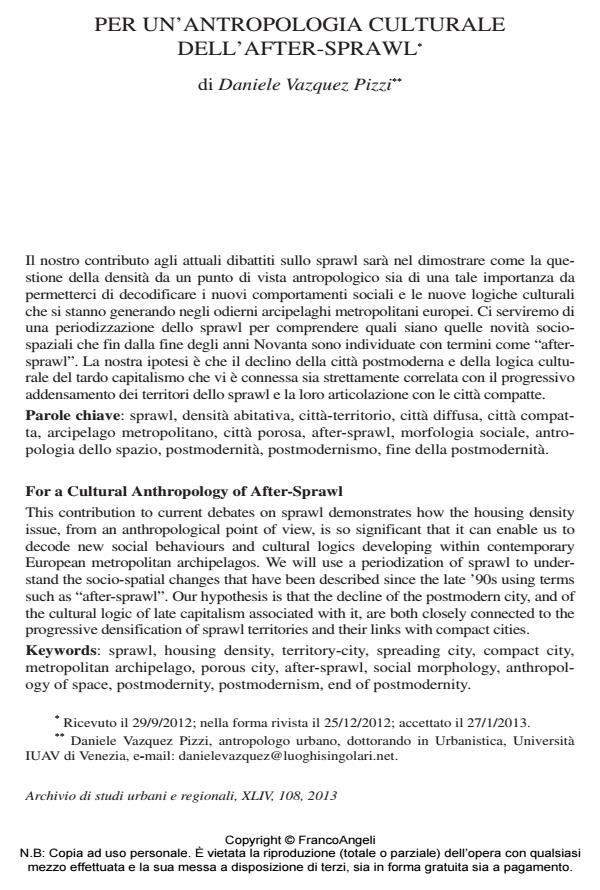For a Cultural Anthropology of After-Sprawl
Journal title ARCHIVIO DI STUDI URBANI E REGIONALI
Author/s Daniele Vazquez Pizzi
Publishing Year 2014 Issue 2013/108
Language Italian Pages 26 P. 11-36 File size 569 KB
DOI 10.3280/ASUR2013-108002
DOI is like a bar code for intellectual property: to have more infomation
click here
Below, you can see the article first page
If you want to buy this article in PDF format, you can do it, following the instructions to buy download credits

FrancoAngeli is member of Publishers International Linking Association, Inc (PILA), a not-for-profit association which run the CrossRef service enabling links to and from online scholarly content.
This contribution to current debates on sprawl demonstrates how the housing density issue, from an anthropological point of view, is so significant that it can enable us to decode new social behaviours and cultural logics developing within contemporary European metropolitan archipelagos. We will use a periodization of sprawl to understand the socio-spatial changes that have been described since the late ’90s using terms such as "after-sprawl". Our hypothesis is that the decline of the postmodern city, and of the cultural logic of late capitalism associated with it, are both closely connected to the progressive densification of sprawl territories and their links with compact cities. Keywords: sprawl, housing density, territory-city, spreading city, compact city, metropolitan archipelago, porous city, after-sprawl, social morphology, anthropology of space, postmodernity, postmodernism, end of postmodernity
Keywords: Sprawl, densità abitativa, città-territorio, città diffusa, città compatta, arcipelago metropolitano, città porosa, after-sprawl, morfologia sociale, antropologia dello spazio, postmodernità, postmodernismo, fine della postmodernità
Daniele Vazquez Pizzi, Per un’antropologia culturale dell’after-sprawl in "ARCHIVIO DI STUDI URBANI E REGIONALI" 108/2013, pp 11-36, DOI: 10.3280/ASUR2013-108002